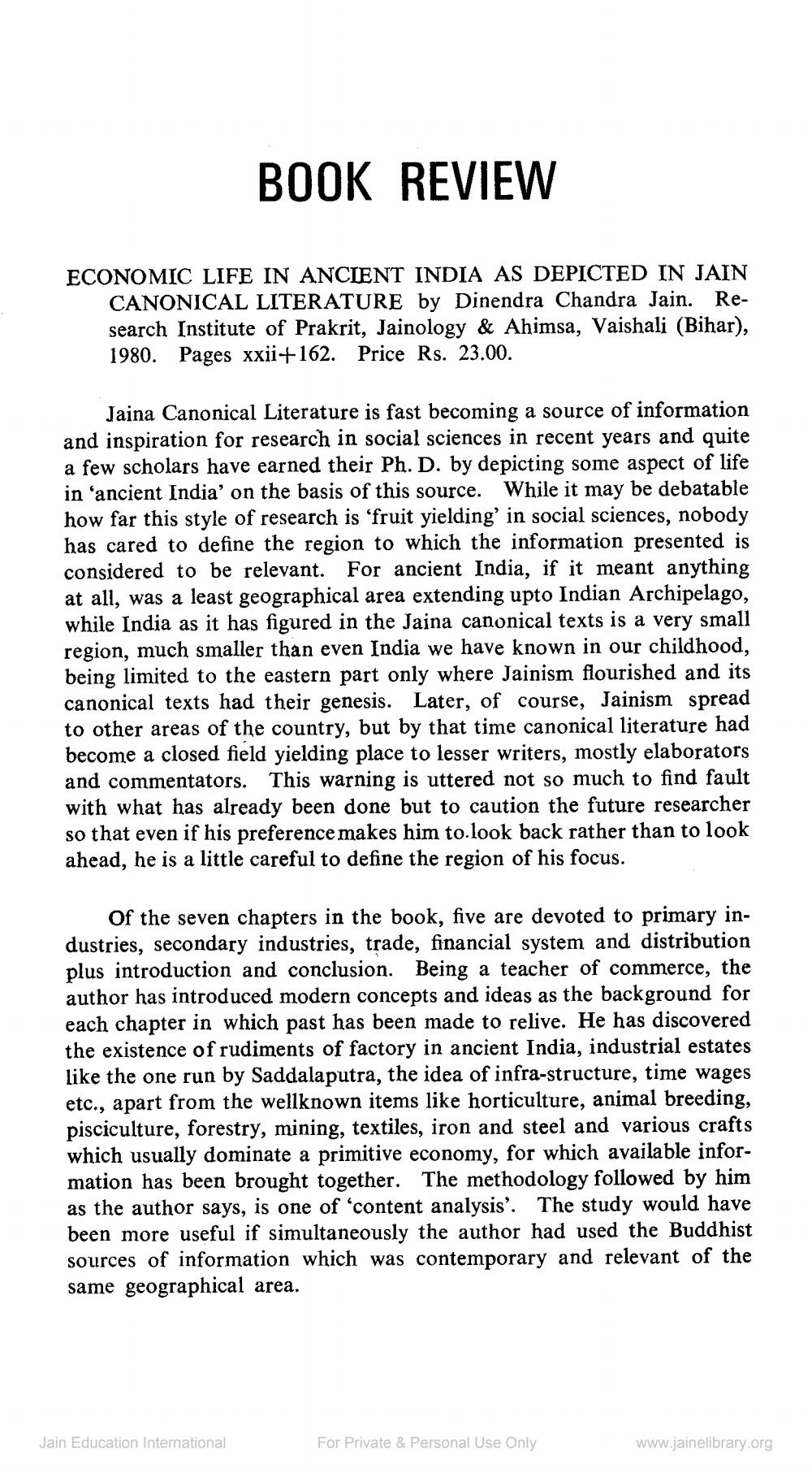________________
BOOK REVIEW
ECONOMIC LIFE IN ANCIENT INDIA AS DEPICTED IN JAIN CANONICAL LITERATURE by Dinendra Chandra Jain. Research Institute of Prakrit, Jainology & Ahimsa, Vaishali (Bihar), 1980. Pages xxii+162. Price Rs. 23.00.
Jaina Canonical Literature is fast becoming a source of information and inspiration for research in social sciences in recent years and quite a few scholars have earned their Ph. D. by depicting some aspect of life in 'ancient India' on the basis of this source. While it may be debatable how far this style of research is 'fruit yielding' in social sciences, nobody has cared to define the region to which the information presented is considered to be relevant. For ancient India, if it meant anything at all, was a least geographical area extending upto Indian Archipelago, while India as it has figured in the Jaina canonical texts is a very small region, much smaller than even India we have known in our childhood, being limited to the eastern part only where Jainism flourished and its canonical texts had their genesis. Later, of course, Jainism spread to other areas of the country, but by that time canonical literature had become a closed field yielding place to lesser writers, mostly elaborators and commentators. This warning is uttered not so much to find fault with what has already been done but to caution the future researcher so that even if his preference makes him to.look back rather than to look ahead, he is a little careful to define the region of his focus.
Of the seven chapters in the book, five are devoted to primary industries, secondary industries, trade, financial system and distribution plus introduction and conclusion. Being a teacher of commerce, the author has introduced modern concepts and ideas as the background for each chapter in which past has been made to relive. He has discovered the existence of rudiments of factory in ancient India, industrial estates like the one run by Saddalaputra, the idea of infra-structure, time wages etc., apart from the wellknown items like horticulture, animal breeding, pisciculture, forestry, mining, textiles, iron and steel and various crafts which usually dominate a primitive economy, for which available information has been brought together. The methodology followed by him as the author says, is one of 'content analysis'. The study would have been more useful if simultaneously the author had used the Buddhist sources of information which was contemporary and relevant of the same geographical area.
Jain Education International
For Private & Personal Use Only
www.jainelibrary.org




